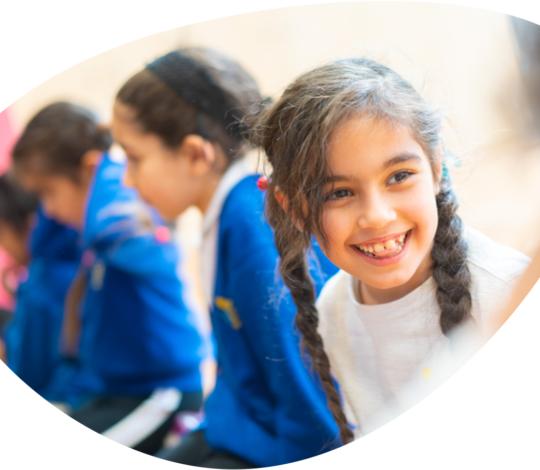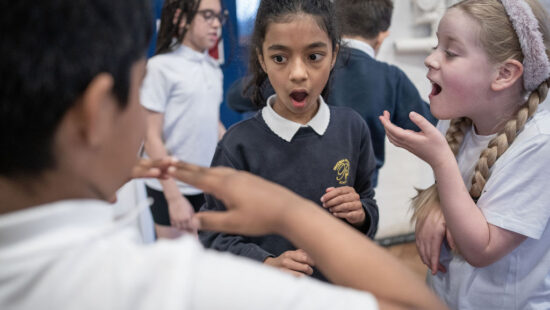The power of performing arts for EAL students

The power of performing arts for EAL students
A few years ago, I had the privilege of working with a truly inspirational secondary school teacher who taught a class with a variety of learning needs. Among her students was a shy young boy from Morocco who struggled with English, both in reading and comprehension. To make the curriculum accessible, she incorporated performing arts into her lessons in inventive ways.
Battles in history were broken down into segments, with small groups performing each part. Children were crowned kings and queens, key words and terms were acted out or given movements, and I saw the class truly come alive. Over the course of the year, I watched this shy Moroccan boy come out of his shell, integrate into the class, and learn alongside his peers.
This example of how the performing arts can help EAL (English as an Additional Language) children has stayed with me ever since. Walking into class each academic year, we see more and more children with EAL. As educators, we face the daily challenge of not only helping them learn and understand English but also enabling them to integrate and become a part of school life. As a dance specialist working in education for several years, I have found that incorporating the performing arts into core curriculum teaching is a fantastic way to support language development and engagement. It may require extra planning, but the reward of seeing students progress makes it worthwhile.
Using rhymes and chants for language acquisition
One effective strategy I have found is the use of chants and rhymes to aid language acquisition. Children tend to pick up rhythms fairly easily. For instance, saying names, colours, greetings, and numbers with a rhythm can help younger students, particularly in KS1 or Foundation Stage, learn new vocabulary. The use of sounds and chants can also help children literally get their tongues around new words. Over time, they begin to imitate sounds and eventually say the words themselves.
With some of my younger groups, I introduce a simple ‘Hello’ song with waving actions. Initially, I include ‘hello’ in different languages present in the room, all set to the same tune. Over the weeks, I have observed how students not only pick up the words of the song but also understand that we are greeting each other. Using flashcards or pictures with numbers, paired with counting songs like Ten Green Bottles, is another effective way to support number learning.
Enhancing learning through movement
Adding movement to learning can significantly accelerate EAL students’ progress. While running the Artis Film programme, I had students create movements to represent set etiquette commands (such as “Camera!” and “Action!”). They devised unique actions for each word in the sequence, and through repetition, they learned to respond instinctively.
Some topics naturally lend themselves to movement-based learning. For instance, when teaching ‘Planting and Growing,’ I show images of how plants grow while introducing key words (seed, water, soil, etc.). The class then performs movements corresponding to each key word before embodying the full growth process, from seed to plant. Pair work adds another layer to the activity—half the class mimics planting seeds, watering them, and shining sunlight, while the other half ‘grows’ into plants. Similar activities can be applied to topics like ‘The Water Cycle’ or ‘Electricity,’ where movement helps illustrate processes. Using cue cards with sequencing words such as first, then, after that, and finally can reinforce understanding of progression.
Bringing history to life with role-play
As mentioned earlier, the secondary school teacher I worked with used drama and role-play to bring history lessons to life. History is an ideal subject for this approach, as it allows students to embody historical figures and events. For instance, when teaching Greek Myths, students can be shown a picture of the Minotaur, say the word aloud, then move around like one, reinforcing both vocabulary and comprehension. They can then take on the role of Theseus and move like a warrior.
Dividing the class into groups to reenact battles can be particularly engaging. Providing cue cards with words like sword, warrior, battle, or names of opposing factions helps EAL students grasp key concepts. An extension activity could involve discussing in pairs ‘what happened next?’ using structured cue cards (first, then, after that, in the end), gradually building vocabulary and understanding of dialogue in English.
Observing growth and progress
Over the last twelve weeks, I have seen many of the EAL children in my Artis sessions begin to participate more actively—whether by attempting to sing the words of a song, engaging more in drama scenes, or making an effort to comment on their peers’ work. Witnessing these small but significant milestones is incredibly rewarding and reaffirms my belief that the arts play a vital role in language development.
As for the Moroccan boy I mentioned at the beginning, by the end of the year, he was confidently reading aloud and performing a scene with his group—without any support from me or his teacher.
Written by Tarika Hidayatullah (Wiggle), Artis Mentor

